Hessen is home to a variety of beautiful and fascinating birds. The region’s lush forests provide a haven for both migratory and resident species, offering a unique opportunity to observe these creatures in their natural habitat.
More than 300 species of birds are found in Hessen, including raptors, waterfowl, woodpeckers, songbirds, and shorebirds. Whether you are a beginner or an experienced bird watcher, there are plenty of opportunities to observe and appreciate the avian life in Hessen.
15 Birds Found in Hessen
Hessen is a state in central Germany known for its rich cultural heritage, natural beauty, and diverse wildlife. Birds are exceptionally prominent and varied among the many animals that inhabit Hessen.
More than 300 species of birds can be found in Hessen, ranging from raptors and waterfowl to woodpeckers and songbirds.
Whether you are a beginner or an experienced birdwatcher, you will find plenty of opportunities to observe and appreciate the avian life in Hessen.
Here are 15 birds that you can look out for in Hessen.
1. Eurasian Kestrel
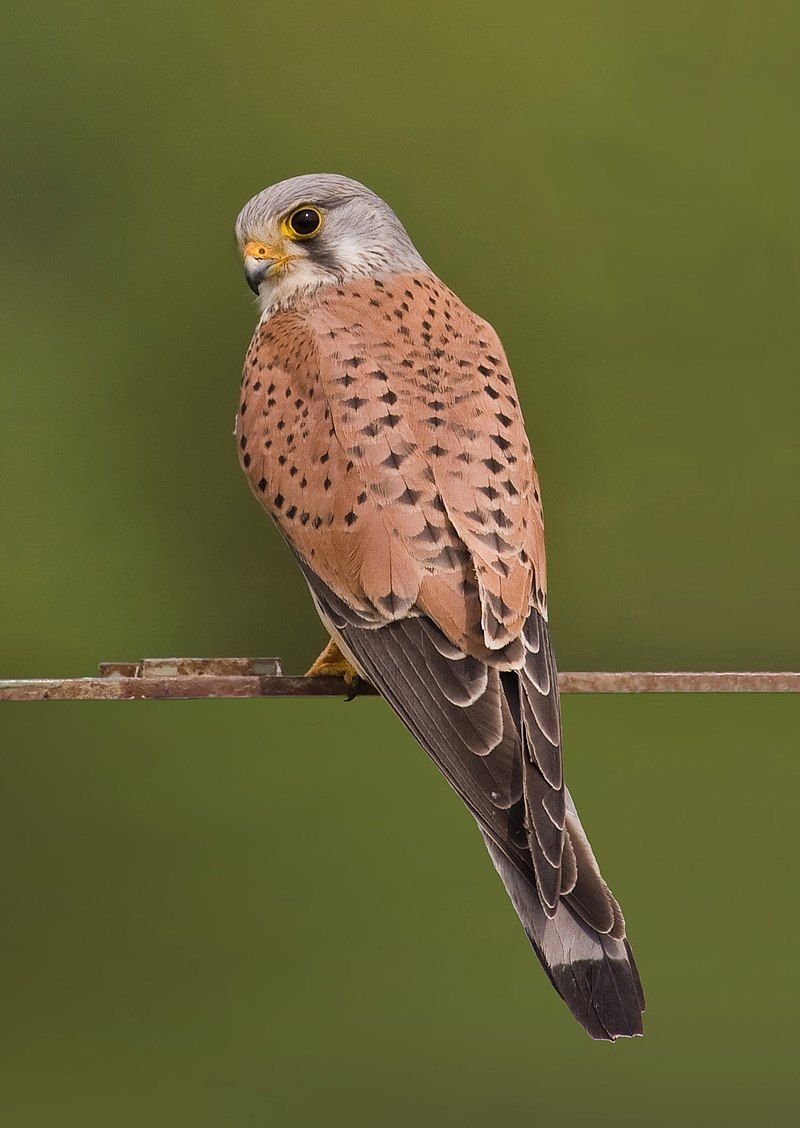
The common kestrel is a species of bird of prey belonging to the falcon family. It can be found in many parts of the world, including Europe, Asia, and North America.
It is a member of the kestrel group of the Falconidae family and is also known as the European kestrel, Eurasian kestrel, or Old World kestrel.
The common kestrel is a small, agile raptor that typically hunts small rodents and other small prey. In the United Kingdom, the common kestrel is the only species of kestrel that is commonly encountered. As such, it is referred to as “kestrel” in that region.
This species is easily recognizable by its markings, with a chestnut back, white underside, and distinctive black-and-white barring on the wings and tail.
It is also known for its hovering flight pattern, which will remain mid-air and scan the ground below for prey. The common kestrel is an essential species of raptor for the United Kingdom and helps to maintain balance in the local ecosystem.
| Kingdom | Animalia |
| Phylum | Chordata |
| Class | Aves |
| Order | Falconiformes |
| Family | Falconidae |
| Genus | Falco |
| Species | F. tinnunculus |
2. Great Crested Grebe
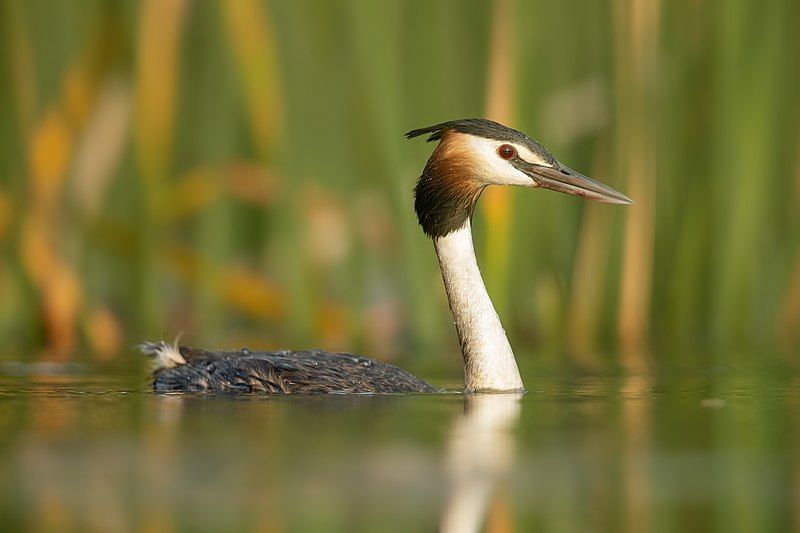
The great crested grebe is a unique species of water bird that belongs to the grebe family. Found naturally in Europe and Central Asia, this bird has an unforgettable appearance due to its large size and distinct black and white plumage.
The species is known for its elaborate mating display, complex behaviors, and courtship rituals. During the mating season, the male and female birds swim in circles around each other, shaking their heads and calling out.
The male will also perform a head-up display, which involves raising his head and neck, spreading his wings, and pointing his bill skyward. This is done to attract the attention of a potential mate.
This fantastic display of courtship is a sight to behold and is one of the many fascinating behaviors of the great crested grebe.
| Kingdom | Animalia |
| Phylum | Chordata |
| Class | Aves |
| Order | Podicipediformes |
| Family | Podicipedidae |
| Genus | Podiceps |
| Species | P. cristatus |
3. Eurasian Blackbird
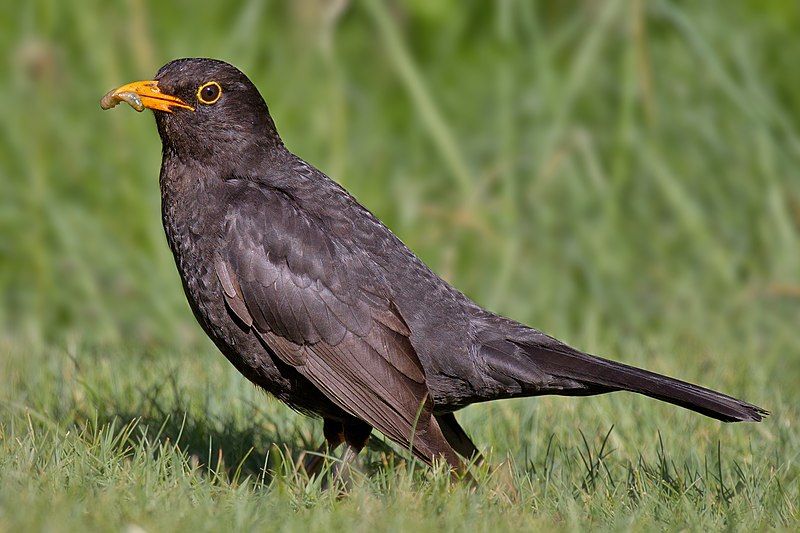
The common blackbird is a species of true thrush native to Europe, Asiatic Russia, and North Africa. It is also known as the Eurasian blackbird or simply the blackbird to avoid confusion with other similar-looking species.
The common blackbird has been introduced to Australia and New Zealand, where it has become a widespread bird species. The common blackbird has a distinctive appearance, with a glossy black plumage and yellow beak.
It is an omnivorous bird, feeding mainly on insects, other small invertebrates, seeds, fruits, and berries.
The common blackbird is a widespread songbird, and its complex and melodic song is often heard in gardens and parks. The common blackbird is an essential species in its native range, playing a vital role in the ecosystem.
It is an important pollinator; its larvae feed on pests like garden snails. It is also an important seed disperser, spreading the seeds of native plants. The common blackbird is a famous backyard bird in its introduced range, often seen visiting bird feeders.
It is an integral part of the local ecology, providing pest control and helping to spread native plants. The common blackbird is a welcome addition to any backyard and is a great way to bring a little bit of the wild into your garden.
| Kingdom | Animalia |
| Phylum | Chordata |
| Class | Aves |
| Order | Passeriformes |
| Family | Turdidae |
| Genus | Turdus |
| Species | T. merula |
4. Common Buzzard
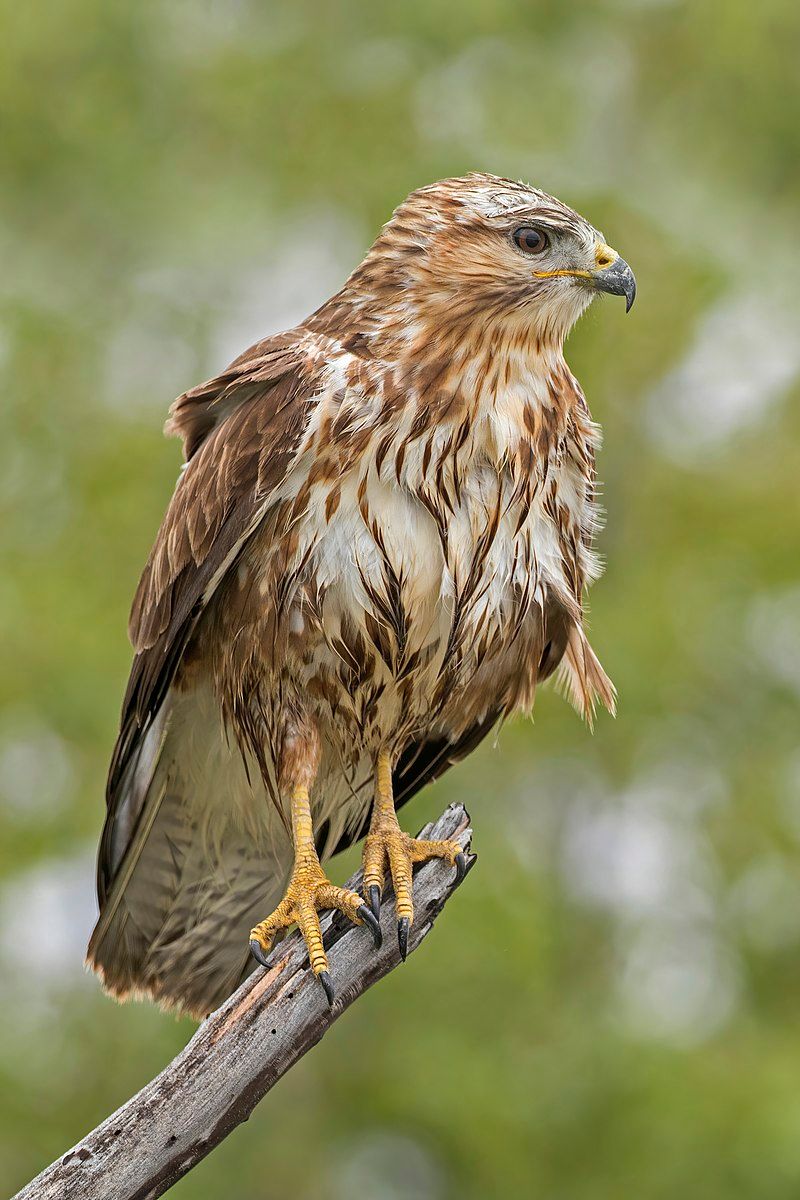
The common buzzard is a bird of prey across an extensive geographical range. It belongs to the genus Buteo and family Accipitridae, which contain birds of prey such as hawks, eagles, and vultures.
The common buzzard is a medium to large bird with a wingspan of up to 1.5 meters. These birds often feed on small mammals, birds, amphibians, and reptiles, making them essential predators in many ecosystems.
They also scavenge, feeding on carrion and other dead animals. The common buzzard is a distinctive bird with brown body, barred wings, and a white tail with a black terminal band.
They can often be seen soaring in circles high in the sky, searching for prey below.
| Kingdom | Animalia |
| Phylum | Chordata |
| Class | Aves |
| Order | Accipitriformes |
| Family | Accipitridae |
| Genus | Buteo |
| Species | B. buteo |
5. Mallard
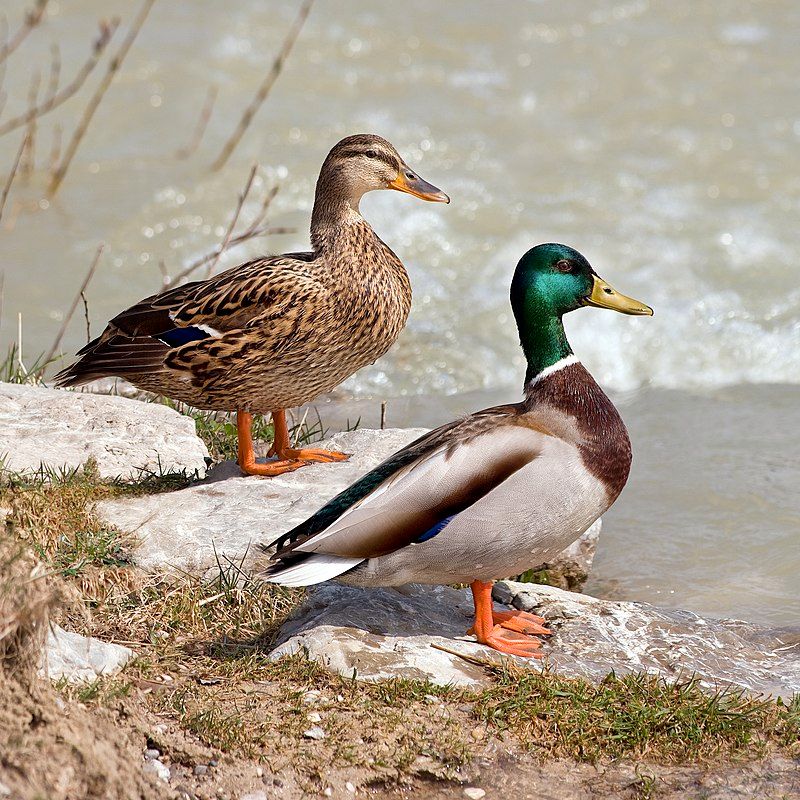
The mallard, or wild duck, is a species of duck found worldwide and can be seen in many different habitats. It is a dabbling duck, meaning it feeds by filtering food from water at the surface rather than diving for food.
It can be found in temperate and subtropical areas of the Americas, Eurasia, and North Africa. It has recently been introduced to New Zealand, Australia, Peru, Brazil, Uruguay, Argentina, Chile, Colombia, the Falkland Islands, and South Africa.
Its range has increased significantly with its introduction to these new regions, allowing its population to increase substantially. This duck species is also a famous game bird, with hunting mallards being a popular pastime across much of its range.
As a result, it is essential to ensure that hunting is managed sustainably to ensure the species’ continued survival.
| Kingdom | Animalia |
| Phylum | Chordata |
| Class | Aves |
| Order | Anseriformes |
| Family | Anatidae |
| Genus | Anas |
| Species | A. platyrhynchos |
6. Eurasian Blue Tit
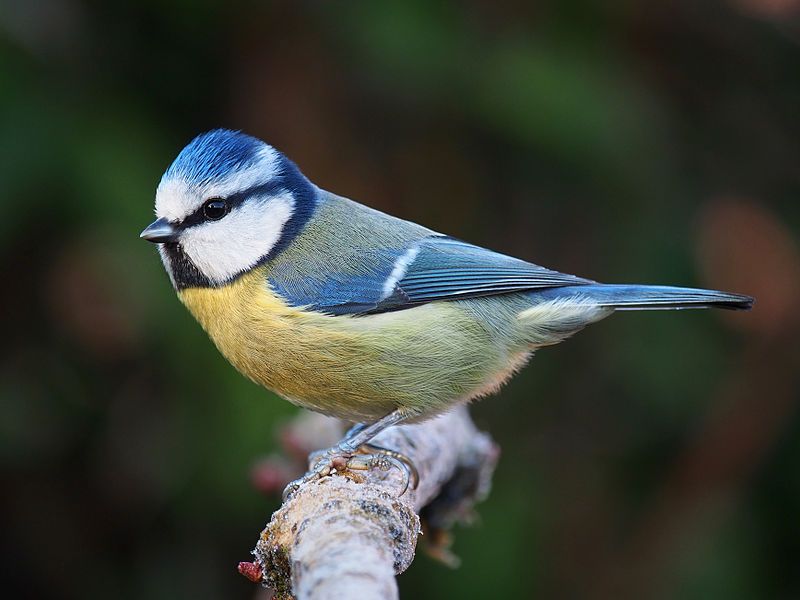
The Eurasian blue tit is a small passerine bird belonging to the Paridae family. It is one of the most easily recognizable birds due to its distinctive blue and yellow plumage and small size.
The Eurasian blue tit is native to Europe and parts of Asia and is a common sight in many gardens and parks. It is an opportunistic feeder, eating a variety of food items such as insects, spiders, berries, and seeds.
The Eurasian blue tit is also known for its ability to open milk bottles to drink the cream found at the top, earning itself the nickname “the milkman.”In terms of its physical characteristics, the Eurasian blue tit is a small bird with a length of around 12-14 cm and a wingspan of around 21-24 cm.
Its body is mainly blue, with yellow on its head, wings, and tail. It has a white face with a black crown and a distinctive black line that runs from its bill to its eyes.
The Eurasian blue tit is also recognizable by its loud, cheerful song and its playful behavior. Overall, the Eurasian blue tit is a colorful and well-loved bird that can be easily spotted in many parts of the world.
Its distinct plumage and small size make it recognizable even to those without prior knowledge of bird species. In contrast, its cheerful song and playful behavior make it a welcome sight in many gardens and parks.
| Kingdom | Animalia |
| Phylum | Chordata |
| Class | Aves |
| Order | Passeriformes |
| Family | Paridae |
| Genus | Cyanistes |
| Species | C. caeruleus |
7. Red-Crested Pochard
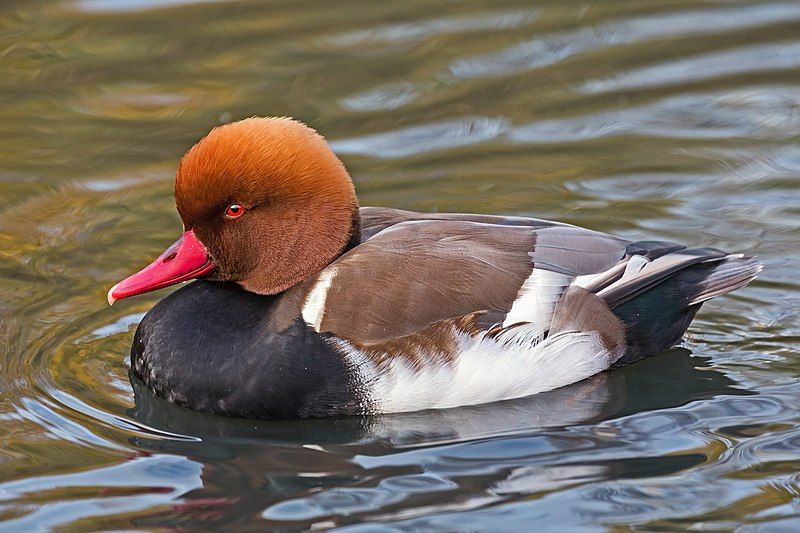
The red-crested pochard is a species of large, diving duck native to many parts of the world.
This species of duck is easily recognizable by its bright red crest and its scientific name, which is derived from the Greek word “Netta,” meaning “duck,” and the Latin word “Rufina,” meaning “golden-red.” This duck species is quite large, with males reaching lengths of up to 41 cm and females reaching lengths of up to 37 cm.
They have a black head, white cheeks, and a reddish-brown back slightly darker than the chest. They have a white belly, flanks, and black tails and wings.
The red-crested pochard is an aquatic species that prefers to inhabit shallow, freshwater bodies such as ponds, lakes, and rivers. They feed mainly on plant material, such as seeds, aquatic vegetation, small fish, and invertebrates.
This species is known to be exceptionally social, gathering in large flocks during the winter months. The red-crested pochard is not currently considered an endangered species, but its population is declining due to various threats, including habitat destruction, pollution, and hunting.
Conservation efforts are being made to help protect this species and its habitat.
| Kingdom | Animalia |
| Phylum | Chordata |
| Class | Aves |
| Order | Anseriformes |
| Family | Anatidae |
| Genus | Netta |
| Species | N. rufina |
8. Cackling Goose
The cackling goose is a species found in North America and East Asia. It is a small member of the goose family, with a size similar to that of a mallard duck. It has a black head and neck, white cheeks, and a white body with black barring and spots.
Its tail is short, and its wings are relatively short and rounded. The cackling goose can be distinguished from other geese by its unique vocalizations, which some have likened to a cackle.
It is also known for roosting in large, communal flocks, seen on lakes and ponds yearly—the cackling goose breeds in North America and East Asia.
Its breeding range in North America includes much of Alaska and Canada and parts of the northern United States. In East Asia, it breeds in Siberia and northern China. During the winter, it migrates south to the north of the United States, parts of Mexico, and Japan.
The cackling goose feeds on seeds, berries, and aquatic vegetation. It is also known to feed on crops, which has caused conflicts with farmers in some areas. As a result, some populations have declined in recent years due to habitat loss and hunting.
The cackling goose is an essential species in North America and East Asia, often seen on lakes and ponds. Its unique vocalizations, communal roosting habits, and attractive plumage make it popular for birdwatchers and photographers.
| Kingdom | Animalia |
| Phylum | Chordata |
| Class | Aves |
| Order | Anseriformes |
| Family | Anatidae |
| Genus | Branta |
| Species | B. hutchinsii |
9. White-Headed Duck
The white-headed duck is a small diving duck species native to many parts of the world and is approximately 45 cm long. Males of this species have a striking appearance, with a white head and black crown, a blue bill, and reddish-grey plumage.
The females, on the other hand, have a dark bill and more subdued colors. The white-headed duck prefers to breed in aquatic habitats such as lakes, ponds, and marshes as long as there is open water and areas of dense vegetation at the margins.
This species is particularly well adapted to diving for food and can remain underwater for up to half a minute.
It is also a strong swimmer capable of traveling long distances for food and suitable nesting sites. This species is listed as vulnerable on the IUCN Red List of Threatened Species, mainly due to habitat loss and overhunting.
Conservation efforts are underway to protect white-headed ducks and their habitats to help ensure their continued existence.
| Kingdom | Animalia |
| Phylum | Chordata |
| Class | Aves |
| Order | Anseriformes |
| Family | Anatidae |
| Genus | Oxyura |
| Species | O. leucocephala |
10. Great Tit
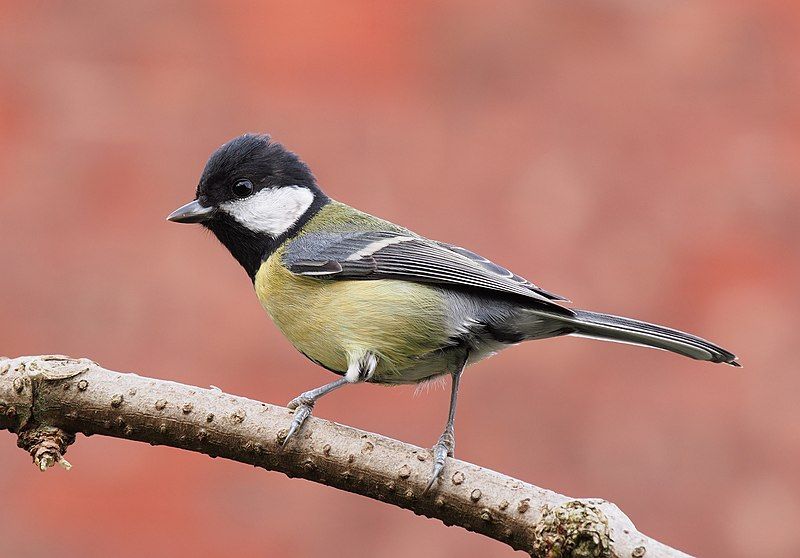
The great tit is a species of bird belonging to the family Paridae. This species is widespread in many areas, including Europe, the Middle East, Central Asia, and the Amur River.
This species can be found over a large geographical area, extending from Europe to Central Asia and the Amur River. The great tit inhabits a variety of habitats, ranging from deciduous and mixed woodland to gardens.
It is a medium-sized bird, typically weighing 12 and 14 cm long and weighing 12 and 18 grams. The adult male has a glossy black head and neck, white collar, and yellow breasts.
The adult female has a greyish-brown head and neck and a yellowish-brown breast. The great tit is an omnivorous species, feeding on a variety of insects, seeds, and fruits.
It is an essential species in the food chain, playing a vital role in controlling its prey populations.
| Kingdom | Animalia |
| Phylum | Chordata |
| Class | Aves |
| Order | Passeriformes |
| Family | Paridae |
| Genus | Parus |
| Species | P. major |
11. Great Spotted Woodpecker
The great spotted woodpecker is a common bird found in the Palearctic, which includes parts of North Africa. It is medium-sized, with black and white plumage and a red patch on its lower belly. Males and young birds also have red markings on their necks or heads.
This multi-colored species, with the black and white plumage, starkly contrasts with the red markings. The great spotted woodpecker is a very active bird and can often be spotted drumming or tapping on tree trunks in search of insects.
This species is a very vocal bird, too, and makes loud calls throughout the year. It is also a very social bird, often seen in pairs or small groups. The great spotted woodpecker is an essential species for the forests it inhabits.
It helps to keep the insect populations in check and also helps to regenerate trees by pecking away at the dead bark and creating cavities for insects to nest in.
It also plays a vital role in seed dispersal, as it helps to spread the seeds of the trees it feeds on. Overall, the great spotted woodpecker is a unique species that plays a vital role in the ecosystems it inhabits.
It is a beautiful bird with striking colors and a loud call and can be found across the Palearctic.
| Kingdom | Animalia |
| Phylum | Chordata |
| Class | Aves |
| Order | Piciformes |
| Family | Picidae |
| Genus | Dendrocopos |
| Species | D. major |
12. Black Stork
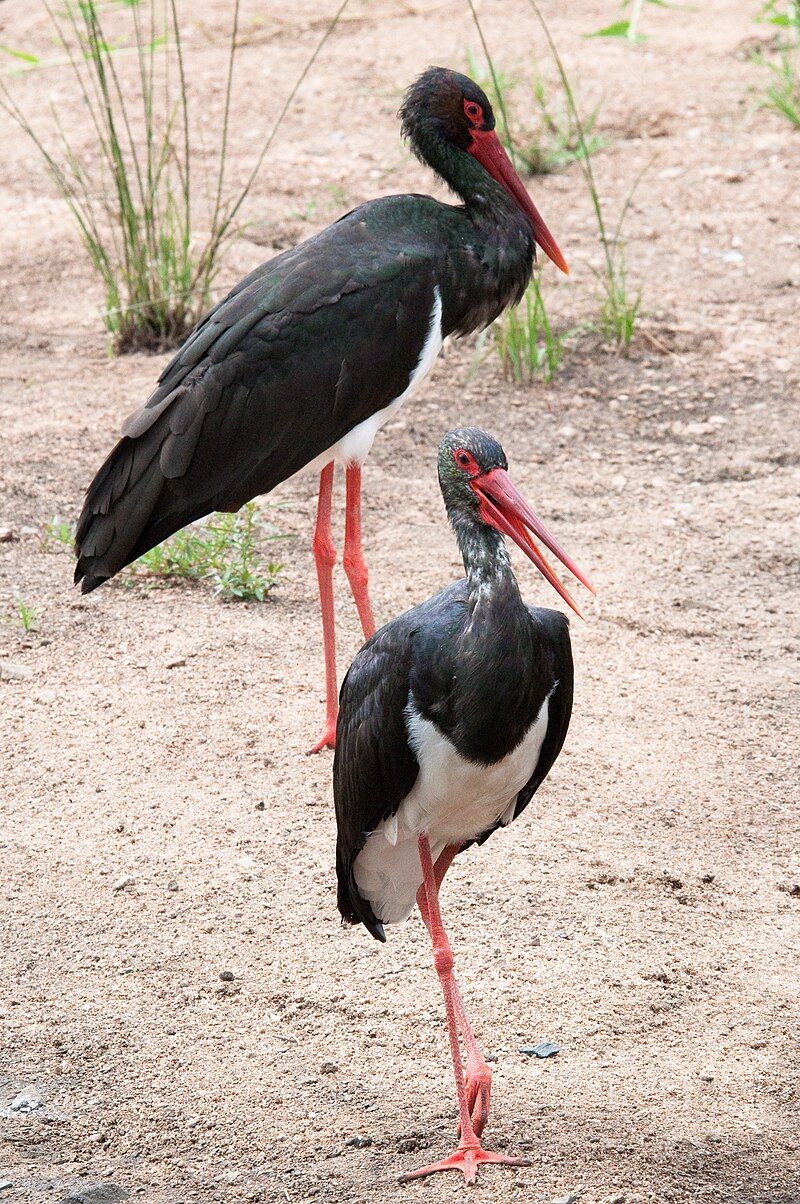
The black stork (Ciconia nigra) is a large bird in the stork family Ciconiidae. It is found in wetlands and forests across temperate Europe, parts of Africa, and western Asia. They can reach a height of up to one meter and weigh up to three kilograms.
The black stork has a long neck, long legs, and a thick, pointed beak. Its wings are blackish-brown, and it has a white head, neck, and breast. The black stork was first described by Carl Linnaeus in the 10th edition of his Systema Naturae in 1758.
It is a shy, solitary bird that spends most of its time in wetlands or forests. It feeds on fish, frogs, and even small mammals. The black stork usually breeds in pairs and builds its nest in tall trees or cliff ledges.
It is an endangered species due to habitat loss, illegal hunting, and poisoning. Conservation efforts are being made to protect this species from further decline.
| Kingdom | Animalia |
| Phylum | Chordata |
| Class | Aves |
| Order | Ciconiiformes |
| Family | Ciconiidae |
| Genus | Ciconia |
| Species | C. nigra |
13. Great Bustard
The great bustard is a large bird that belongs to the bustard family. It is the only bird alive and belongs to the genus Otis. This bird species can be found in various grasslands and farmland from northern Morocco to East Asia.
This species prefers to live in temperate climates, providing the right breeding conditions. In Europe, the great bustard can be found in Central and South Europe and Central and East Asia.
The great bustard prefers living in open areas like grasslands and farmland to find food and shelter easily. The great bustard is a vital bird species, as it plays an essential role in the ecosystems in which they live.
They are also an essential food source for many other animals, such as predators and scavengers.
| Kingdom | Animalia |
| Phylum | Chordata |
| Class | Aves |
| Order | Otidiformes |
| Family | Otididae |
| Genus | Otis |
| Species | O. tarda |
14. Red-Backed Shrike
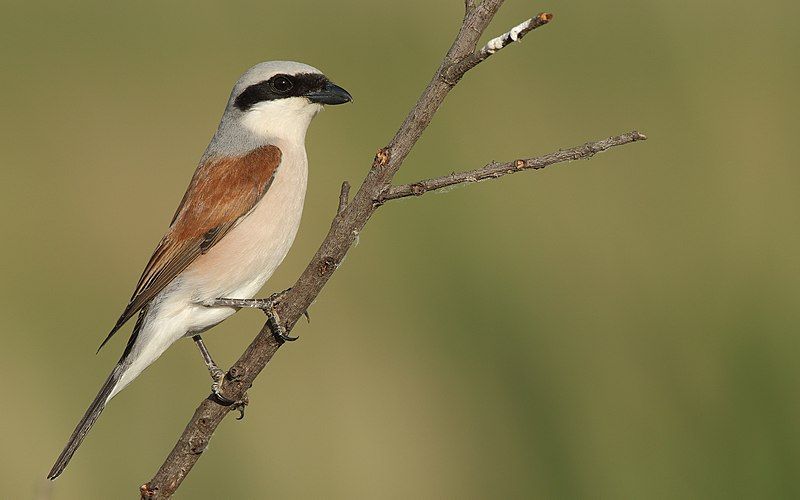
The red-backed shrike is a carnivorous bird belonging to the shrike family, Laniidae. It has an extensive breeding range, stretching from Western Europe to central Russia.
During the winter, red-backed shrikes migrate to tropical and southern Africa, where they can find more suitable climates to survive.
Because of this, red-backed shrikes can survive in places on their breeding grounds, as they can adapt to the new environment. In addition, the shrike can feed on various prey, including small mammals, insects, and other birds.
This makes them a key predator in their environment, helping to keep the local populations of their prey in balance.
| Kingdom | Animalia |
| Phylum | Chordata |
| Class | Aves |
| Order | Passeriformes |
| Family | Laniidae |
| Genus | Lanius |
| Species | L. collurio |
15. Black-Headed Gull
The black-headed gull is a small member of the gull family. It is found in many parts of the Palearctic, including Europe, North Africa, and Asia. This species also breeds on the east coast of Canada.
Most of the population of this species migrates south for the winter, but some birds remain in the milder areas of Western Europe. This species is easily recognizable by its black head and white body. The black-headed gull is a reasonably common sight in coastal areas.
It is most often seen in flocks, feeding on fish, insects, and other small creatures. This species also steals food from other birds, such as terns and puffins. The black-headed gull is an integral part of the avian ecology of the Palearctic and coastal Canada.
| Kingdom | Animalia |
| Phylum | Chordata |
| Class | Aves |
| Order | Charadriiformes |
| Family | Laridae |
| Genus | Chroicocephalus |
| Species | C. ridibundus |
Conclusion
The diverse avian population in Hessen, Germany, underscores the region’s rich biodiversity and ecological significance. With its varied landscapes, including forests, rivers, and farmland, Hessen provides a habitat for many bird species.
From familiar residents like blackbirds and sparrows to migratory species such as swallows and storks, the region offers birdwatchers ample opportunities for observation and study.